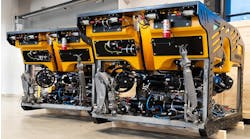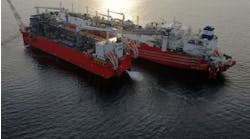Shaft coupling’s high friction coefficient doubles torque transmission capability
Anew generation of shaft couplings from SKF offers significant benefits for marine propulsion systems, including those in offshore vessels. The first delivery has been made to Rolls-Royce for a newbuilding in a Norwegian shipyard.
SKF, whose unique couplings are widely used in the marine industry, has arranged a series of events to introduce the OKX coupling to the shipbuilding sector. In August it presented the new product to major Korean shipyards, reports marketing and sales manager Jörgen Dahlgren.
The coupling, which has DNV type approval, has a special carbide coating on one of the sleeves which gives it a friction coefficient of 0.3, compared with 0.14 for a typical conventional coupling - in other words, it has double the torque transmission capacity of a conventional coupling.
This means that a smaller, lighter OKX coupling can be used instead of a conventional coupling, making it easier and faster to mount and dismount. Alternatively, a customer may wish to take the benefit in terms of higher torque transmission, replacing a conventional coupling with an OKX coupling of the same size.
SKF sees further possibilities for the new coupling, such as in high torque applications or for use in confined spaces where existing couplings are too large to be used. A combination of the two is also possible, as all couplings are tailor-made for each customer’s requirements, Dahlgren says.
The OKX is an addition to SKF’s OK range, which comprises OKC couplings for straight shafts and OKF couplings for flanged shafts. Like the established models, the new version employs SKF’s own oil injection method. The coupling consists of an outer sleeve and an inner sleeve, with tapered mating surfaces. During mounting, oil is injected between the sleeves to reduce the friction and allow the outer sleeve to be moved up the taper to its final position. Once in place, the oil is drained off. During dismounting, oil is again injected to allow the friction to be released.
The coupling thus mounted has a high torque transmission capacity, but the main benefit for users is the time savings involved in mounting and dismounting such couplings - typically one hour - compared with mechanical couplings.•
For more information contact Jörgen Dahlgren, SKF Coupling Systems. Tel +46 290 256 58, fax +46 290 282 70, [email protected], www.couplings.skf.com




